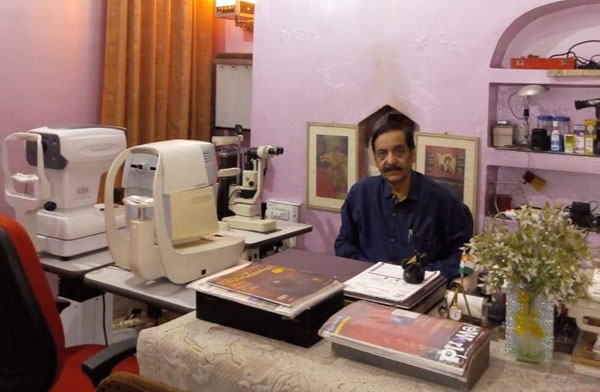As per the American Optometric Association adults who wear glasses or contact lenses and adults who are over 60 years should visit their eye care specialist every year or as suggested by the doctor. If the person doesn’t require any vision correction, then a person between 18 and 60 years should visit the doctor twice a year.
Low vision is a term describing a level of vision below normal (20/70 or worse) that cannot be corrected with conventional glasses. Low vision is not the same as blindness. People with low vision can use their sight. However, low vision may interfere with the performance of daily activities, such as reading or driving.
"20/20 vision" is commonly accepted as the standard of normal distance vision for a human being. Basically it means "good visual acuity at 20 feet." So if your vision is 20/20, you can read certain sizes of letters on a Snellen chart clearly at 20 feet or closer. But if your friend has 20/15 vision, his visual acuity is better than yours: you would have to stand 15 feet away from the chart to read the smaller letters that he can read while standing 20 feet away. Conversely, someone with 20/30 vision has worse distance vision than you.
The tears in your eyes keep them lubricated and moist. That keeps your eyes comfortable. Dry eyes are caused when your eyes are not producing enough tears. You may notice a blurred vision, light sensitivity, redness, and itching in your eyes. Any disbalance in your tear-flow system can cause dry eyes. Other causes include natural ageing process, conditions such as rheumatoid arthritis and collagen vascular diseases; less blinking or staring at computer screens or any other object for a long time without blinking.
The ability to focus on near objects decreases steadily with age and is referred to as presbyopia. Presbyopia is a natural aging of the lens. It is usually near the age of 40, when glasses or bifocals are prescribed to correct this condition.
Will working at a computer screen hurt my eyes?
No, there is no evidence that working at a computer damages the eyes. However, long hours of work can be fatiguing to the eyes, neck and back. Monitor glare from various light sources can also be a problem. It is often helpful to take periodic breaks, looking off in the distance and adjusting your work station (angle of the monitor, height of the chair, changing the lighting, etc.).
No, but most people are more comfortable reading with proper lighting which is bright enough to provide good illumination but not so bright as to cause glare.
Possibly. If both the biological parents wear glasses, your children are likely to need them as well.
Using commercial saline solutions is the safest method of cleaning lenses. Some studies have shown that homemade solutions may lead to corneal infections. Also see information about contact lenses.
Yes, contact lenses provide excellent vision for most sports. However, they do not protect the eyes from injury. Therefore, contact lens wearers should use polycarbonate sports safety goggles or glasses when participating in sports.
Yes, viral conjunctivitis (pink-eye) is very common and is extremely contagious. Avoid touching eyes with your hands, wash hands frequently, do not share towels, and avoid work, school or daycare activities for a least five days or as long as discharge is present.
Low vision is a term describing a level of vision below normal (20/70 or worse) that cannot be corrected with conventional glasses. Low vision is not the same as blindness. People with low vision can use their sight. However, low vision may interfere with the performance of daily activities, such as reading or driving.
